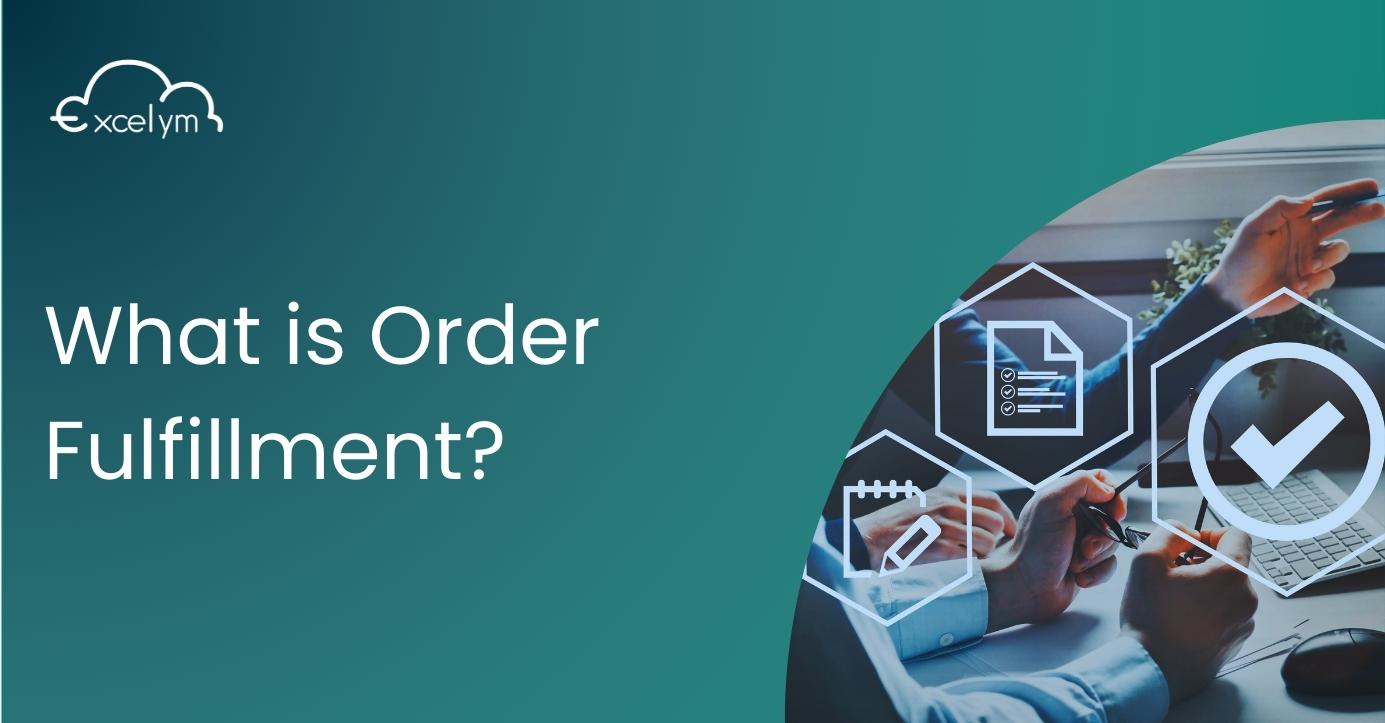Last Modified: May 5th, 2025
6 min read

Order fulfillment is the process of assembling and shipping customer orders, along with related tasks like inventory management, quality control, and customer support. It includes five main steps, from strategic sourcing to shipping. Small businesses often handle fulfillment in-house, while larger companies rely on complex distribution strategies. The ultimate goal is to deliver orders quickly, reliably, and cost-effectively.
How Does the Order Fulfillment Process Work?
Order fulfillment involves managing inventory, processing orders, ensuring quality, and supporting customers with returns or exchanges, all typically handled in distribution centers.
Receiving Inventory
Inventory can arrive from various sources, including third parties, internal departments, pipelines, or databases. Upon arrival, it must be counted, inspected, and recorded to ensure accuracy and quality. SKUs or barcodes help streamline receiving, storage, and future retrieval processes.
Inventory Storage
Goods received at the fulfillment center are inventoried and either distributed immediately or stored temporarily to support organized distribution for current sales, not future stockpiling.
Order Processing
An order management system streamlines product picking and packing for new customer orders. In ecommerce, it integrates with shopping carts to automate order processing.
Picking
Warehouse teams or robots pick items based on packing slips, which detail SKUs, product details, quantities, and storage locations.
Packing
Packing teams or automated robots choose materials to minimize dimensional weight (length x width x height) for efficient shipping and cost savings. Return shipping materials and labels are often included for customer convenience.
NetSuite Zebra Label Printing Solution
For businesses that rely on Zebra Label Printers to manage their label printing processes, the Excelym Zebra Printing Solution is the perfect tool to enhance efficiency and accuracy. This robust solution seamlessly integrates with your existing NetSuite system, ensuring a smooth and automated printing workflow that eliminates errors and saves time. With features like real-time syncing, compatibility with various Zebra printer models, and reliable support for high-volume printing, the Excelym Zebra Printing Solution ensures your operations stay streamlined and hassle-free.
Optimize your label printing process today by exploring this innovative solution here:Excelym Zebra Printing Solution.
Shipping
Orders are shipped to customers via carriers like FedEx, UPS, or USPS, with costs based on either actual or dimensional weight, whichever is higher. Using efficient packaging can reduce shipping costs, but carriers have strict packaging rules to maximize their space. Failing to follow these rules may result in delays or rejected shipments.
Delivery
Shipping routes often involve multiple carriers, such as FedEx handling pickup and USPS managing final delivery. Hybrid methods are common, especially since USPS delivers to remote areas where other carriers don’t, making it practical for last-mile delivery.
Returns Processing
Returns processing involves including shipping materials and a return label with the original order. Returned products go through quality control checks to determine if they can be restocked, returned to a vendor for credit, or sent for recycling, depending on their condition.
Consider Integrating Your ERP with Warehouse Management Systems, Shipping or 3PL Applications
Excelym.IO (integration platform/iPaaS) can seamlessly connects your NetSuite system with warehouse management systems, shipping apps, or 3PL providers. This eliminates the need for manual data entry between systems and effectively reduces order processing times. This inventory accuracy can significantly reduce stockouts and overstock situation. Additionally, the automation of routine tasks will allow your warehouse staff to focus on more strategic activities, improving overall productivity.
The platform is reliable, customizable, and scalable, making it suitable for businesses of any size. From managing large shipment volumes to handling complex warehouse operations, it ensures seamless connectivity and efficiency. Find out more at https://www.excelym.io/.
Common Challenges in Order Fulfillment
Order fulfillment faces challenges like supply shortages, inventory issues, poor demand planning, and supply chain disruptions.
Inventory Management
Stock shortages harm customer satisfaction and brand reputation, making recovery difficult. However, customers are more understanding when delays are caused by major events like natural disasters or Black Swan events.
Demand Planning
Overstocking increases storage costs and risks if demand drops, while understocking can lead to shortages. Accurate demand planning is key to maintaining the right inventory balance.
Logistics Planning
Efficient logistics are crucial for maintaining customer satisfaction and protecting a company’s reputation and profitability. Issues like delays, damaged goods, or poor packaging can harm sales, so monitoring end-to-end performance is essential.
Supply Chain Execution
A supply chain strategy involves balancing cost and benefit tradeoffs, such as choosing a sole supplier for price breaks and priority status, though this can pose risks if the supplier faces disruptions. Supply chain execution (SCE) refers to managing tasks within the supply chain using software tools for material handling, product tracking, data sharing, and transactions. SCE often relies on multiple applications, including order, inventory, warehouse, transport, and logistics management systems.
Order Fulfillment Best Practices
Begin with the Fundamentals
Efficient order fulfillment relies on strong organization. Start by streamlining receiving processes to quickly handle shipments and return damaged goods, reducing back-orders and customer wait times.
Optimize Warehouse Efficiency with Strategic Item Placement
Organize your warehouse by placing high-demand items near pickers and packers, and less popular items further back to improve picking efficiency.
Streamline Shipping and Logistics
Ensure fast, cost-effective delivery while having a backup shipping plan for unexpected issues or rate increases.
Consider Automation
Automation reduces costs, enhances safety, and improves working conditions.
Choosing the Right Order Fulfillment Strategy for Your Business
Businesses can choose between internal, hybrid, or outsourced order fulfillment strategies based on their resources and skills. Internal fulfillment offers more control but requires in-house expertise, while outsourcing allows companies to focus on production and sales, reducing logistical challenges. A hybrid model combines the benefits of both. To decide, assess your product, fulfillment options, and costs with a detailed financial analysis.
Order Fulfillment Models
Order fulfillment models have been refined over many decades, but the basics hold true, and that is for very sound business reasons.
Types of Order Fulfillment
There are four order fulfillment models: in-house, outsourcing, drop shipping, and hybrid, each suited to different business needs.
- In-house: All fulfillment steps are handled internally.
- Third-party: Fulfillment is outsourced to an external vendor.
- Drop shipping: The manufacturer handles production and shipping, reducing costs but limiting merchant control and potentially delaying deliveries.
- Hybrid: A mix of the above, such as handling popular items in-house while outsourcing peak periods or bulky products.
Each model has its pros and cons, depending on business needs.
Essential Tips to Optimize Your Order Fulfillment Process
Streamline order fulfillment with a robust ERP system to track orders, inventory, and shipments, ensuring better visibility, improved experiences, and higher profits.
Select the right ERP system for order fulfillment:
Opt for a platform that provides comprehensive tracking for orders, inventory, and other key business operations. ERPs like Oracle NetSuite offer versatile modules that allow you and your team to manage everything from order fulfillment and finances to human resources—all within a secure, cloud-based system accessible anytime, anywhere.
Need help with NetSuite?
For businesses using NetSuite, our NetSuite Support service efficiently manages issues and tickets. With experienced professionals, we assist with troubleshooting, system optimization, and custom solutions. From resolving technical issues to handling configurations and updates, we ensure your NetSuite system runs smoothly. Trust us to save time, reduce risks, and let your team focus on growth. Learn more.
Streamline supplier and vendor integration:
With modern ERP systems, you can seamlessly connect with suppliers and vendors. For instance, your restocking and accounts payable processes can operate automatically with minimal human input. Simply set your rules, link your vendors and suppliers, and let the system take care of the rest.
Manage customer expectations effectively:
Communicate timelines clearly from the start and aim to meet them. If delays arise, update customers promptly to maintain trust and prevent disappointment.
Improve inventory management:
Managing inventory requires balance—too little can lead to stockouts, while too much drives up costs. An ERP with robust inventory management features can help you find the right equilibrium.
Choose the best order picking strategy:
Optimizing human resources is key to cost-effective order fulfillment. Popular strategies include discrete order picking (picking one order at a time), zone picking, and batch picking (handling multiple orders simultaneously), all designed to minimize travel time and boost efficiency.
Build a strong partnership with your shipper:
Collaborate closely with shipping providers like USPS, UPS, FedEx, and DHL to negotiate optimal rates and schedules for your fulfillment needs. Work together to minimize delays and ensure smooth operations.
Be ready for customer service and returns:
Mistakes and delays are inevitable, but being prepared to handle them ensures a great customer experience.
Streamline Order Fulfillment with Order Management Software
Enhance your order fulfillment process with advanced order management software. NetSuite Order Management, a key component of the NetSuite ERP, consolidates ordering, shipping, payments, and delivery into a single, efficient system. It handles complex tasks like split orders and drop shipping with ease, while providing global access and automation. Whether you’re a growing startup or an established company, upgrading to a modern system can reduce costs and improve the customer experience—benefiting both your business and your clients.
Check out this insightful blog on order fulfillment: https://www.netsuite.com/portal/resource/articles/erp/order-fulfillment.shtml. It’s a must-read for anyone looking to streamline their processes and enhance efficiency!
Simplify Order Fulfillment in NetSuite with Expert Outsourcing
Outsource your NetSuite tasks to Excelym to streamline operations and boost productivity. Our team efficiently handles critical tasks like item fulfillment, ensuring accurate, timely processing while freeing your resources for strategic priorities. With our expertise, you reduce errors, ensure compliance, and improve system performance. Focus on business growth with our reliable NetSuite task management service. Contact us to get started.
Serge is a Managing Partner and the head of sales and business development.
Published on: May 5, 2025
